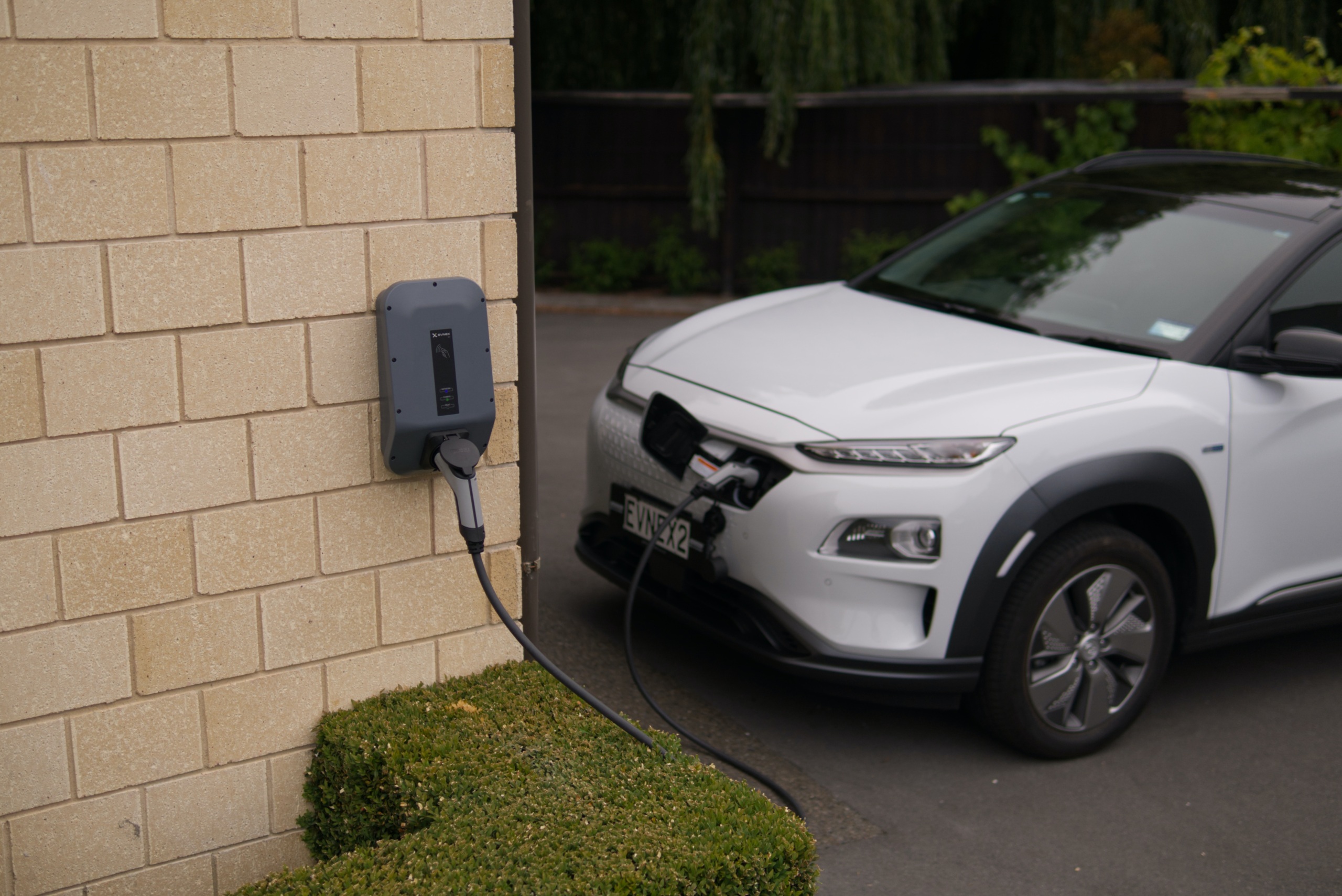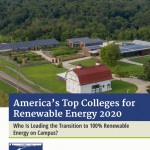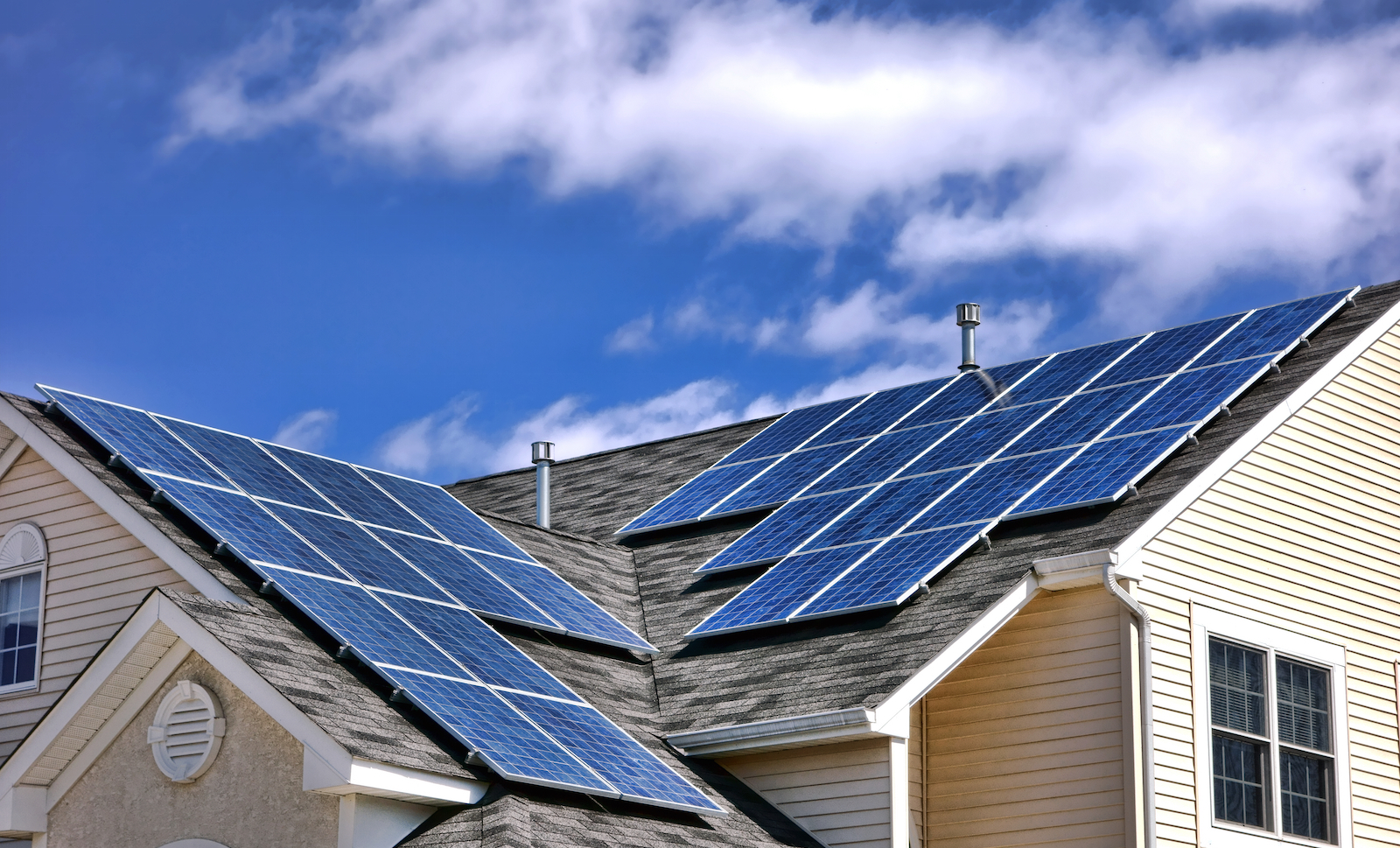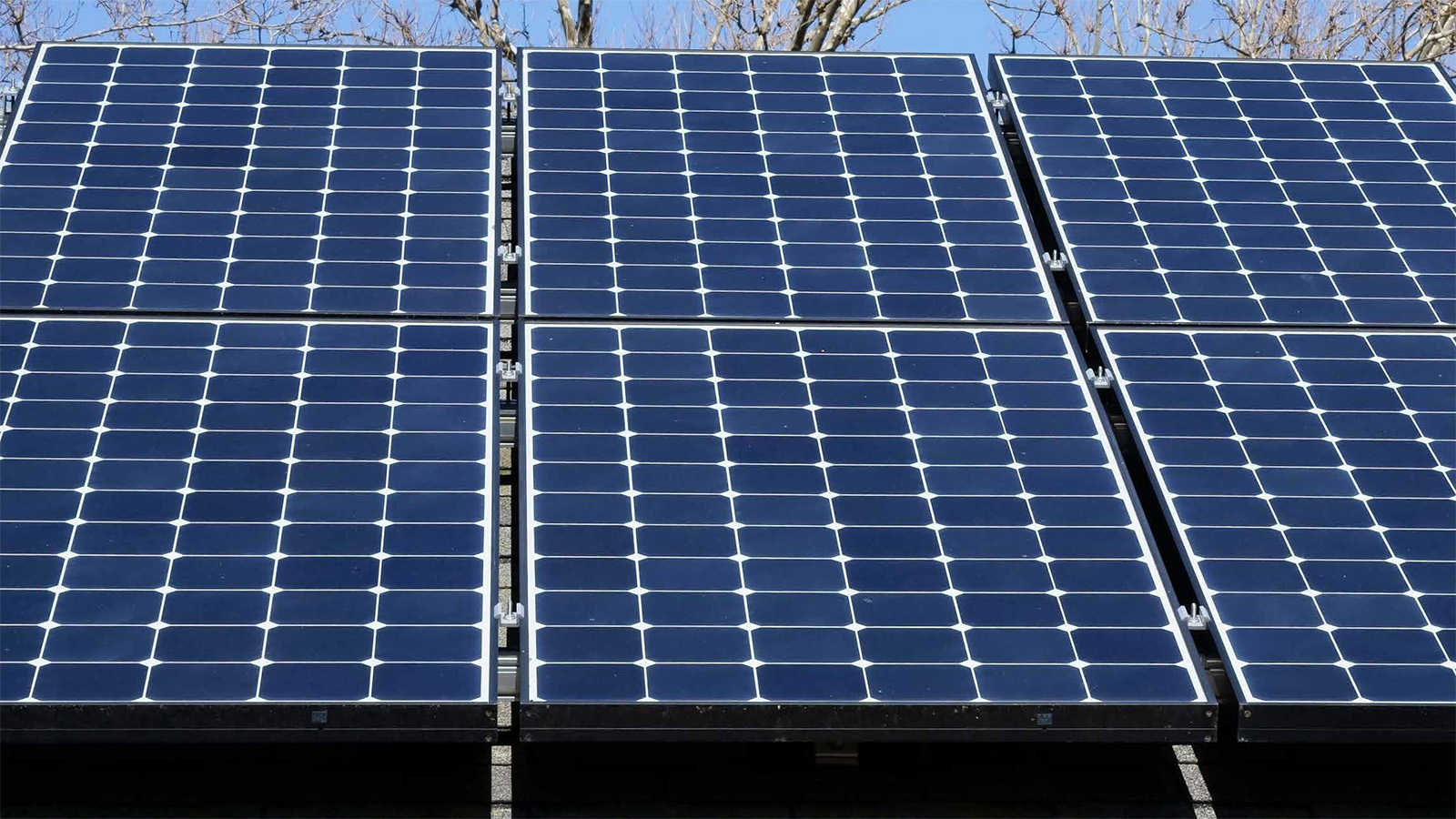
America’s Top Colleges for Renewable Energy 2020
Who’s Leading the Transition to 100% Renewable Energy on Campus?
America’s Top Colleges for Renewable Energy 2020: Who’s Leading the Transition to 100% Renewable Energy on Campus? ranks campuses in three categories: shifting to renewable electricity; repowering buildings with clean energy; and adopting electric vehicles (EVs).
Environment America

America’s colleges and universities are leading the transition to a 100 percent renewable energy system. Small liberal arts colleges, large public universities and community colleges alike, from every corner of the U.S., are taking the lead in reducing energy consumption, deploying renewable energy technologies, and switching to electric vehicles (EVs).
The nation’s leading campuses for clean energy – from Georgetown University to the University of Idaho – are setting a strong example for other colleges and the nation as a whole to follow. More than 40 colleges and universities now obtain 100 percent or more of their electricity from renewable energy sources.
Campuses are also leading in cleaning up America’s transportation system. Each of the top 10 schools for electric vehicles in this ranking has switched over 60 percent of its campus-owned vehicles to EVs. Of the schools that reported their campus fleet details to STARS, 82 percent have at least one EV.
Leading campuses are taking action on multiple fronts. Colby College in Maine is one of the leaders in the use of electricity from renewable sources, as well as the use of on-campus renewable energy to supply other building energy needs such as heating and hot water. Other leading colleges include Georgetown University, which generates 130 percent of its electricity needs with clean renewable sources, and Ringling College of Art and Design in Florida, which has a campus fleet made up of 85% EVs.
College campuses are ideal places to lead the renewable energy transition. Colleges are large energy users and are well suited to employ microgrids and district heating and cooling systems that expand the potential uses for renewable energy. Organizations such as Second Nature, with more than 400 active participants in its Climate Leadership Network, have helped get hundreds of campuses to make commitments to act on climate by pursuing carbon neutrality and climate resilience. Schools that seize these opportunities also draw the attention of potential students. A 2020 Princeton Review survey of more than 10,000 college applicants found that two-thirds of them would factor in schools’ environmental commitments – including commitments related to energy use – when deciding where to attend.
America’s leading clean energy colleges and universities are setting a shining example for other schools to follow. When the COVID-19 pandemic wanes, schools should follow their lead by pledging to move toward 100 percent renewable energy.
Leading campuses are well on the way to 100 percent renewable energy.
Of 127 colleges that reported data to the U.S. Environmental Protection Agency’s (EPA) Green Power Partnership, 42 are now meeting at least 100 percent of their electricity needs with renewable energy generated by the university or purchased through power purchase agreements (PPAs) or renewable energy certificates (RECs). Seventy-six colleges are getting at least 50% of their energy from renewables. Georgetown University in Washington, D.C., leads all schools, generating and purchasing more than 1.3 times as much electricity from renewable sources as it consumes.
Leading campuses are not just switching to renewable electricity – they are also replacing all fossil fuel-powered systems, including for heating, cooling and hot water, with systems that run on electricity or renewable energy, such as solar thermal panels and geothermal heat pumps. Over half of universities’ energy consumption – 53 percent on average – comes from water heating and space heating, which are primarily powered by gas and other fossil fuels.
Colby College in Maine ranks first for using renewable energy for its non-electrical energy needs, thanks in part to energy from a geothermal system that draws from the earth’s stable temperature to provide heating for its Alumni Center and the Davis Science Center. Chatham University in Pennsylvania, which is second in this year’s ranking, features three solar thermal systems that are used to heat all of its hot water.
Leading schools are switching their campus fleets to electric vehicles.
Leading campuses are not just cleaning up their buildings, but also their transportation systems by transitioning away from fossil fuel-powered vehicles and toward EVs. Transportation accounts for the largest portion of greenhouse gas emissions in the United States at 29 percent, so shifting how we power our vehicles is essential to reaching a zero-carbon future.
Ringling College of Art and Design in Florida leads the nation in percentage of campus-owned vehicles that are electric powered, with 35 of the college’s 41 vehicles being EVs. All of the top five schools that reported to the AASHE STARS database had more than 70 percent of their vehicles be EVs.
Leading schools are reducing energy consumption by improving the energy efficiency of campus buildings and encouraging students and employees to conserve energy.
Colleges and universities are reducing energy consumption on campus to make it easier to power themselves with 100 percent renewable energy. Leading campuses are cutting their energy consumption by improving energy efficiency and by better managing their heating, cooling and ventilation needs in real time to prevent waste. Schools are also cutting consumption through energy conservation programs, such as Brown University’s Departmental Sustainability Program (DSP), which encourages departments to adopt sustainable practices in their energy consumption, as well as to reduce waste production and to reduce emissions from transportation.
Numerous schools have adopted ambitious renewable energy commitments for the future.
Vanderbilt University made a commitment in 2019 to power its entire campus with renewable energy and achieve carbon neutrality by 2050. To meet this goal, Vanderbilt plans to invest in on-site and off-site renewable energy, reduce its carbon footprint from transportation, expand green spaces and pedestrian walkways, and invest in sustainable infrastructure. Some of the sustainability projects it has spearheaded include a dockless bikeshare program, the building of solar-powered phone charging stations and picnic tables, as well as a solar-powered water heating system installed in the Currey Tennis Center. Vanderbilt also announced at the end of January 2020 a 20-year agreement with the Tennessee Valley Authority and Nashville Electric Service to build a new 35 MW solar farm that will help offset around 70 percent of Vanderbilt’s annual indirect greenhouse gas emissions from purchased electricity.
The University of Arizona is moving ahead with the state’s largest ever renewable energy deal between a university and a utility company. The agreement with Tucson Electric Power will dedicate portions of two new renewable energy projects to the university: a solar-plusstorage system southeast of Tucson and a wind farm in New Mexico. Both projects are set to go up in late 2020.
The University of Hawai’i (UH) is committed to produce as much renewable energy as its campuses use by 2035. In 2019, a 1-megawatt installation of PV panels at the University of Hawai’i at Manoa’s parking structure came online, and another megawatt of solar power is expected to be built in the summer of 2020.
The University of California system (UC) is committed to 100 percent clean electricity and to becoming carbon neutral by 2025. One of the most impressive parts of UC’s commitment is its policy to avoid onsite combustion of fossil fuels for space heating and water heating in all new campus buildings and those undergoing major renovations.
To follow in the footsteps of leading campuses, all colleges and universities should:
• Set a goal to obtain 100 percent of their energy from renewable sources – including for electricity, heating and other building energy needs, and campus-owned vehicles. To achieve this goal, schools should:
º Reduce energy consumption through energy efficiency improvements and energy conservation initiatives.
º Use renewable energy sources, such as wind and solar power, to supply 100 percent of their electricity.
º Transition all other building energy systems – including heating, hot water and cooling – to be electric or powered by renewable energy sources, such as solar hot water or ground-source heat pumps.
º Swap all fossil-fuel powered vehicles for EVs.
• Enable and encourage students and employees to commute to and from campus sustainably by walking, biking, taking transit or using EVs.
• Purchase goods and services – such as food and travel – that minimize the use of fossil fuels.
NOTE: Chatham University in Pennsylvania reports that its purchases of renewable energy in 2019 exceeded 100 percent of its electricity consumption. The updated data, not available when this report went to press, would make Chatham one of 43 schools to receive 100 percent or more of their electricity from renewables.
Topics
Find Out More


Solar panels: How federal tax credits can help you pay for them

Recording of Rooftop Solar on the Rise webinar


